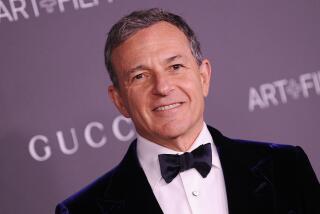TV served a la carte
- Share via
AMERICAN consumers have little choice when it comes to cable television. If you want ESPN, you must pay for 60-plus channels that you may never watch. If your child loves Nickelodeon, your family must pay for the same 60-plus channels, some of which may not be suitable for young children. Now, imagine deciding for yourself which TV channels you want to purchase. You could select the channels you want to pay for, and opt out of those you don’t. In fact, right now millions of TV viewers outside the U.S. have these choices. They buy their television channels individually or in smaller bundles -- and get better deals as a result.
Why can’t Americans do this now? Because there is too little competition, too much regulation and not enough consumer choice in the cable TV business. As a result, in just the last two years alone cable prices have increased at twice the rate of inflation -- and more than 90% since 1995. Cable companies explain away their skyrocketing prices by saying they are giving you more and more channels. At no time, however, have the cable companies actually asked if you want those additional channels. You have to pay for them whether you want them or not.
The solution to high cable bills isn’t price controls or additional government regulation. It is more competition and more choice. For that reason, Congress should pass the proposed Consumers Having Options in Cable Entertainment Act -- the CHOICE Act -- which is being introduced today. It would allow cable companies to compete nationally for your business (rather than only at the local level) in exchange for agreeing to offer channels a la carte, either individually or in smaller bundles.
The Government Accountability Office has found that cable rates are 15% lower when a community has at least two companies competing for consumers. The Federal Communications Commission found that consumers could lower their monthly cable bill by as much as 13% if they had a la carte programming options.
And parents would never be forced to purchase a slew of channels, some not suitable for young children, simply to receive those channels that their family enjoys watching together.
Real-world examples illustrate the benefits of greater choice and more competition coming through our TV sets. In Hong Kong, viewers can select and pay for only the channels they want. A family that wants to watch sports, movies, news and children’s programming can receive 15 free channels plus a selection of 11 additional digital channels (including ESPN, HBO, CNN Headline News, National Geographic Channel, Animal Planet and Discovery Channel) for only $27.50 a month. To get a package that includes those channels in Washington, the cost is $82 per month -- almost $1,000 a year. That’s quite a difference.
Similarly, in Canada, digital subscribers can buy channels individually or enjoy significant savings on a “5 pack,” a “10 pack” or a “15 pack” of their own choosing.
Interestingly, the same companies that oppose selling channels individually or in smaller packages in the U.S. offer their programming a la carte in other countries. Their threats of financial ruin and a loss of diverse programming have proved hollow. American consumers want these companies to offer such choices. According to a recent AP-Ipsos poll, 78% of respondents said they would prefer to choose and pay for their own tailored selection of channels.
Today, cable choice and competition have been successful around the world. Consumers in Hong Kong, Britain, India and Canada are reaping the rewards of greater choice from channels being offered on an a la carte basis. So why not increase competition in the U.S. and at the same time make sure that companies offer us true choice in cable programming?
More to Read
The biggest entertainment stories
Get our big stories about Hollywood, film, television, music, arts, culture and more right in your inbox as soon as they publish.
You may occasionally receive promotional content from the Los Angeles Times.










